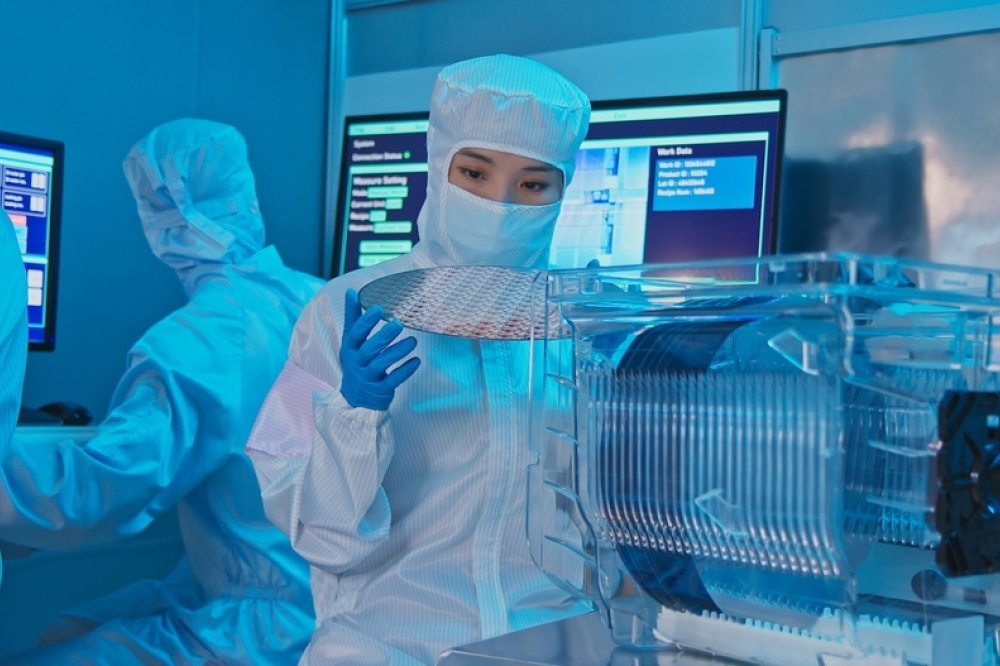DOD names eight 'Microelectronics Commons' Hubs

Under the CHIPS and Science Act, the US Defense Department has awarded nearly $240 million dollars to eight regional "innovation hubs" around the United States which will be a part of the Microelectronics Commons, and which will benefit both the department and the United States by spurring development of a domestic microelectronics manufacturing industry.
"The Microelectronics Commons is focused on bridging and accelerating the 'lab-to-fab' transition, that infamous valley of death between research and development and production," said Deputy Defense Secretary Kathleen Hicks during a briefing today at the Pentagon. "While America is a world leader in the innovative research and design of microelectronics, we've lagged in the ability to prototype, manufacture and produce them at scale. That's what the CHIPS Act is meant to supercharge."
The eight regional hubs include:
• The Northeast Microelectronics Coalition Hub. This hub is led by the Massachusetts Technology Collaborative in Massachusetts, has 90 hub members, and has been awarded $19.7 million.
• The Silicon Crossroads Microelectronics Commons Hub. This hub is led by the Applied Research Institute in Indiana, has 130 hub members, and has been awarded $32.9 million.
• The California Defense Ready Electronics and Microdevices Superhub Hub. This hub is led by the University of Southern California in California, has 16 hub members and has been awarded $26.9 million.
• The Commercial Leap Ahead for Wide Bandgap Semiconductors Hub. This hub is led by the North Carolina State University in North Carolina, has seven hub members and has been awarded $39.4 million.
• The Southwest Advanced Prototyping Hub. This hub is led by the Arizona Board of Regents on behalf of Arizona State University in Arizona, has 27 hub members and has been awarded $39.8 million.
• The Midwest Microelectronics Consortium Hub in Ohio. This hub has 65 hub members and has been awarded $24.3 million.
• The Northeast Regional Defense Technology Hub. This hub is led by the Research Foundation for the State University of New York in New York, has 51 hub members, and has been awarded $40 million.
• The California-Pacific-Northwest AI Hardware Hub. This hub is led by the Board of Trustees of the Leland Stanford Junior University in California, has 44 hub members, and has been awarded $15.3 million.
The eight hubs will focus on microelectronic development in areas like electromagnetic warfare; secure computing at the tactical edge and the internet of things; artificial intelligence hardware; 5G and 6G wireless; and quantum technology, Hicks said.
"Consistent with our warfighter-centric approach, the Microelectronics Commons will get the most cutting-edge microchips into systems our troops use every day: ships, planes, tanks, long-range munitions, communications gear, sensors and much more ... including the kinds of all-domain, attritable autonomous systems that we'll be fielding through DOD's recently announced Replicator initiative," Hicks said.
Today, the United States is responsible for only about 12% of microelectronics production globally, with most production now in Asia. The U.S. also lacks much of the capacity to confirm the viability and marketability of new microelectronics technologies in ways that might convince American industry to invest in them.
The Defense Department-led Microelectronics Commons aims to close the gaps that exist now which prevent the best ideas in technology from reaching the market.
With the Microelectronics Commons, novel technology developed domestically will have a better chance of making it from lab to market entirely inside the United States. The commons will ensure American ingenuity stays inside the U.S. and isn't stolen by adversaries and that the nation rebuilds the capacity to do on its own what it must now depend on foreign nations to do.
"These hubs are not just vital to American scientific, manufacturing and economic competitiveness," Hicks said. "They will also directly contribute to this Department's national defense mission."

































